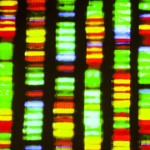NEW YORK (Reuters Health)—Parkinson’s disease and some autoimmune diseases may have genetic risk factors in common, raising the possibility that the immune system may influence Parkinson’s disease pathogenesis, new research suggests.
The study, which analyzed data from genome-wide association studies, “showed a considerable genetic overlap between [Parkinson’s disease] and autoimmune diseases, in particular, type 1 diabetes, Crohn’s disease and rheumatoid arthritis,” corresponding author Dr. Manu Sharma of the Centre for Genetic Epidemiology at the University of Tubingen, Germany, tells Reuters Health by email.
Previous research has pointed to an association between inflammation and neurodegenerative diseases, including Alzheimer’s disease and Parkinson’s disease. Clinical studies have also found a lowered risk of PD in people who regularly use nonsteroidal anti-inflammatory drugs.
However, studies have yielded conflicting results with respect to a potential immune component in Parkinson’s disease, Dr. Sharma says.
To investigate, the researchers used existing data sets from genome-wide association studies (GWAS) in PD and from seven autoimmune disorders (type 1 diabetes, Crohn’s disease, ulcerative colitis, rheumatoid arthritis, celiac disease, psoriasis and multiple sclerosis).
Using an approach called conjunctional false discovery rate analysis, the investigators analyzed GWAS data involving more than 138,000 individuals of European ancestry in search of pleiotropic gene loci, or markers, associated with both PD and the autoimmune disorders.
The analysis identified 17 novel “shared susceptibility loci” with overlap between Parkinson’s disease and the seven autoimmune diseases, the researchers report in JAMA Neurology, online June 5.1
Analysis of an independent data set involving nearly 7,000 Parkinson’s disease cases and about 6,100 controls confirmed that five of these loci were involved in Parkinson’s disease. Some of the genes within the identified loci had been independently implicated in Parkinson’s disease or Crohn’s disease.
The newly identified shared loci play a role in immune system functions, transcriptional function and regulation, and signaling pathways.
The researchers also investigated biological correlation between loci through analyses of protein-protein interaction and changes in expression and methylation levels of immune-function-related genes in the brain.
“The network analysis showed functional relatedness of genes implicated in our study,” Dr. Sharma says, noting that further functional studies are needed to understand the underlying pathways for Parkinson’s disease and autoimmune disorders.
The findings suggest “that extensive clinical studies for monitoring immune and inflammation status in patients with autoimmune [diseases] should be pursued to identify at-risk subjects for [Parkinson’s disease] and vice versa,” he says.
“Although the study . . . provides additional evidence for a mechanistic role of the immune system in [Parkinson’s disease], there are caveats to these types of studies that limit the certainty of the conclusions that can be drawn,” write Drs. Nikolaus R. McFarland, Karen N. McFarland and Todd E. Golde of the University of Florida in Gainesville, in an accompanying editorial.2
To further demonstrate an immune component in the disease process, additional replication and more mechanistic studies are needed, they note.
“In general, these types of studies are useful for generating hypotheses for future studies, yet they need validation in cell and animal models of [Parkinson’s disease] and other neurodegenerative disorders,” they say.
“To my reading, all the ‘immune’ associations [with Parkinson’s disease] remain tenuous, whether genetic, epidemiologic [or)] biologic,” neurogeneticist Dr. Matthew Farrer, of the University of British Columbia in Vancouver, tells Reuters Health by email.
Dr. Farrer, who was not involved in the current study, cautioned that the confirmatory data set was generated with a genomics tool “originally built about immune content, so it is not without bias in terms of genome-wide discovery.”
He also notes that the component of the study that investigated changes in expression and methylation levels of immune function-related genes in the brain was limited to the frontal cortex or cerebellum.
“I am not sure if this makes much biologic sense … it’s basal ganglia and brainstem nuclei that are preferentially affected/lost in [Parkinson’s disease],” explains Dr. Farrer, whose research focuses on genetic and functional analysis of neurologic and neurodegenerative disorders, particularly Parkinson’s disease.
In addition, none of the “mixed bag” of immune disorders that were studied “are that prevalent in Parkinson’s disease—indeed, the opposite,” Dr. Farrer says. For example, multiple sclerosis is extremely rare in pedigrees with familial parkinsonism, he notes.
“Nor am I aware if parkinsonism is more common in any of these immune conditions,” he said. “Thus, the clinical associations/validity and justification to look at common molecular mechanisms is perhaps not so compelling.”
The study had no commercial funding, and the authors reported no conflicts of interest.
References
- Witoelar A, Jansen IE, Wang Y, et al. Genome-wide pleiotropy between parkinson disease and autoimmune diseases. JAMA Neurol. 2017 Jun 5. doi: 10.1001/jamaneurol.2017.0469. [Epub ahead of print]
- McFarland NR, McFarland KN, Golde TE. Parkinson disease and autoimmune disorders—what can we learn from genome-wide pleiotropy? JAMA Neurol. 2017 Jun 5. doi: 10.1001/jamaneurol.2017.0843. [Epub ahead of print]

